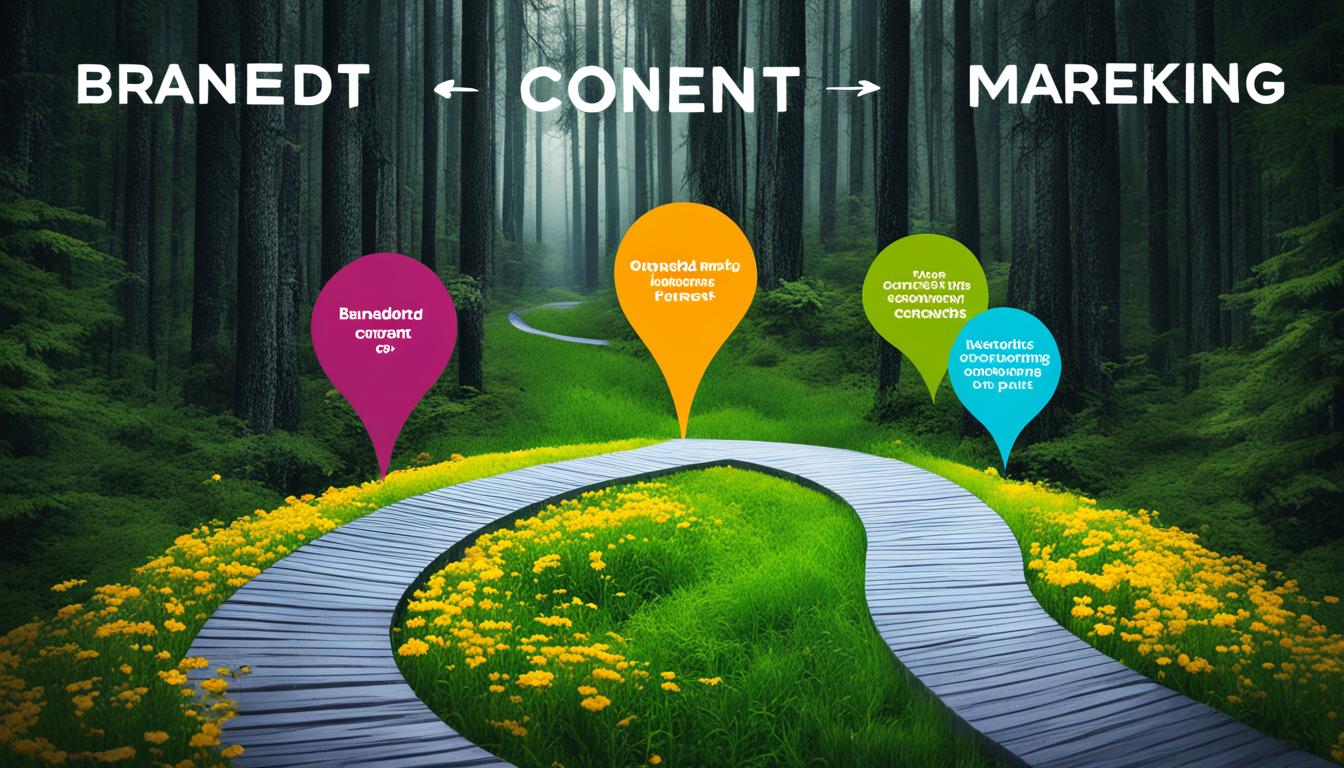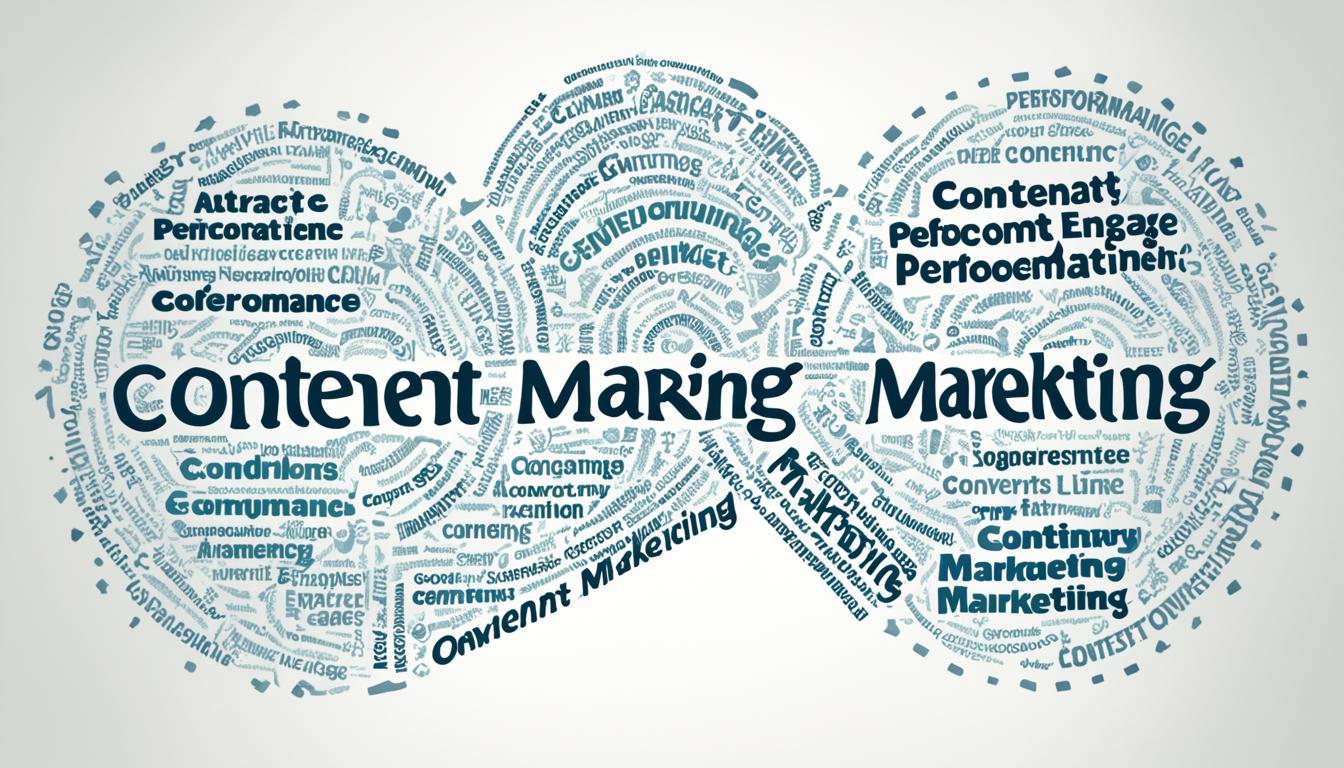Inclusive marketing is more than just a strategy. It’s about embracing diversity and equality in the world of advertising and marketing. This approach aims to connect deeply with everyone, no matter their background. It helps brands form better bonds with a diverse audience and encourages positive changes in society.
But what is inclusive marketing, exactly? It’s a thoughtful strategy that acknowledges everyone. It respects differences in age, looks, race, gender identity, language, income, beliefs, and abilities. By doing so, it fights against stereotypes. It also makes sure those who often get overlooked have their say. This leads to a kinder, more inclusive world.
Key Takeaways:
- Inclusive marketing honors diversity and reaches out to everyone.
- It challenges shallow views and fights against typecasting.
- Having a diverse approach in ads helps build trust with more people.
- When brands fully adopt inclusive marketing, they help create positive change.
- Inclusive ads show real variety in people, making others feel seen and connected.
What is Inclusive Marketing?
Inclusive marketing is a way to embrace diversity in all forms. It looks beyond just showing diverse faces in ads. Its goal is to create a positive brand image and connect better with everyone.
This approach understands people have many identities and experiences. It aims to show real people in the real world. By breaking stereotypes and norms, inclusive marketing appeals to everyone, including those often left out.
Brands that use inclusive marketing connect with more customers. This connection comes from shared values and real understanding. It makes the bond between brand and audience stronger.
With inclusive marketing, brands present an image that’s accepting and respectful. They mirror the diverse lives of their audience in their campaigns. This way, they reach people from all different backgrounds.
The image shows how inclusive marketing covers diversity. It includes different ethnicities, ages, genders, abilities, and backgrounds. This lets brands connect deeply with their audience.
Inclusive marketing is essential for a welcoming society and social progress. It’s about valuing diversity in marketing. Through this, brands can touch lives and support a world that’s more inclusive.
Why is Diversity Important in Advertising and Marketing?
Diversity is key in advertising because it helps brands connect with more people. By showing different kinds of people, brands can create ads that everyone can see themselves in. This breaks down old stereotypes and builds a feeling of community.
**Advertising and marketing** aim to grab the attention of many customers. This is why including diversity is so important. It stops anyone from feeling left out. **Brands** that show diverse characters build better trust and loyalty with people.
Campaigns that highlight **representation** are very powerful. They show people from groups that aren’t often seen in ads. This makes them feel recognized and important. It makes advertisements more meaningful and connects better with everyone.
Showcasing different types of people helps break stereotypes. Brands take an active role in creating a more accepting society. They question and change old, untrue ideas about people.
At its core, **diversity in advertising** makes people feel they belong. Seeing oneself in ads boosts self-worth. This strong bond leads to loyal customers and better sales for brands.
Representation Matters
It’s important for ads to reflect everyone’s reality. Representation allows diverse groups to feel seen and respected. Brands that show different stories and identities show they care. This has a big impact not just on individuals, but on society’s views about diversity.
Brands become more appealing by focusing on diversity. A commitment to being inclusive attracts more customers. Showing diversity tells everyone that a brand is for making the world fairer.
| Brands | Inclusive Marketing Campaigns |
|---|---|
| Ben & Jerry’s | “We Are All ‘Half-Baked’” campaign featuring individuals with disabilities |
| Dove | “Real Beauty” campaign challenging conventional beauty standards |
| Nike | “Dream Crazy” campaign featuring athlete Colin Kaepernick |
| P&G | “The Talk” campaign addressing racial bias |
Inclusive campaigns make a big difference. Brands like Ben & Jerry’s, Dove, Nike, and P&G have reached out to diverse groups. Their actions shift how we see the world and improve their brand’s image.
The Impact of Inclusive Marketing Trends
Inclusive marketing is essential for brand strategies and success. It lets brands make a big impact on their image. It also increases customer loyalty and supports social change.
This type of marketing shows diverse views and questions norms and stereotypes. Brands that use it well can draw in more people. They create real connections and authenticity.
Diversity and Inclusion: Enhancing Brand Impact
Marketing that focuses on diversity improves a brand’s influence. It uses inclusive messages and visuals. This shows a brand’s commitment to a fair society.
By highlighting people from hidden groups, inclusive marketing breaks old stereotypes. This invites everyone to feel part of the brand’s world. It empowers customers to connect deeply with the brand.
Diversity and Representation: Amplifying Voices
True representation drives inclusive marketing. It helps raise the voices of those often overlooked. Brands that embrace this can break down barriers.
Real people in marketing campaigns show the world as it truly is. This turns brands into champions for inclusivity. It makes a positive mark on society.
The Power of Connection and Authenticity
Inclusive trends help brands connect with people genuinely. By showing varied perspectives, they meet their audience’s needs. This builds trust and loyalty.
People value brands that are real and inclusive. Showing a commitment to diversity makes customers more loyal. It builds strong relationships and improves the brand’s image.
Driving Positive Social Change through Inclusive Marketing
Inclusive marketing does more than boost sales. It challenges stereotypes and changes how society sees things. It turns brands into forces for equality.
Brands can change narratives and fight inequality. By standing for diversity, they inspire change. They encourage others to join in making a difference.
Brands Getting Inclusive Marketing Right
Many brands excel at inclusive marketing. They align their strategies to connect with diverse audiences. These brands embrace diversity and inclusion in their campaigns. Their success shows the power of inclusive marketing.
Authentic diversity sets these brands apart. They challenge stereotypes in ads, impacting their brand positively. This makes their target audience feel seen, breaking barriers.
Inclusive marketing isn’t just about ticking boxes for these brands. They embed diversity and inclusion values into their campaigns. They believe diverse perspectives enrich their storytelling.
Fashion and beauty brands showcase models of all backgrounds and body types. Tech companies promote gender and racial equality. These success stories are diverse and inspiring. They’ve become champions of inclusive marketing.
Let’s look at two brands excelling in inclusive marketing:
Brand A: Celebrating Diversity through Empowering Stories
Brand A puts inclusivity at its marketing strategy’s heart. They share stories from various backgrounds, celebrating diversity and inspiring change. Their ads depict real people, enhancing the brand’s identity.
Brand B: Advocating for Social Change through Inclusive Messaging
Brand B champions social change with inclusive marketing. They partner with organizations and influencers who share their values. Their campaigns spark discussions on inclusivity. This builds a loyal customer base.
These examples show inclusive marketing’s impact. Embracing diversity and challenging stereotypes benefits brands and society. These brands are leading the way in today’s marketing landscape.
| Brand | Approach | Results |
|---|---|---|
| Brand A | Powerful storytelling focusing on diverse individuals and their experiences | Increased brand loyalty, positive brand image, and customer engagement |
| Brand B | Advocacy for social change through inclusive messaging and strategic partnerships | Strong customer loyalty, increased brand awareness, and positive social impact |
Examples of Inclusive Marketing Campaigns
Inclusive marketing campaigns let brands show diversity and connect with people. They use real stories from diverse backgrounds. By doing this, they fight stereotypes and represent the variety in their audience. This builds a strong connection with customers.
Let’s look at some key examples of inclusive marketing campaigns:
-
Nike’s “Dream Crazier”
Nike’s “Dream Crazier” campaign shines a light on female athletes’ success. It takes on gender stereotypes in sports. Women breaking barriers are featured, showing what success means to them. This campaign supports gender equality in sports. It inspires everyone to follow their dreams.
-
Apple’s “Behind the Mac”
Apple’s “Behind the Mac” shows diverse users creating and innovating. It features people from different careers and life paths. Their unique stories and how Apple products helped them are highlighted. The aim is to spark creativity and inclusiveness in everyone.
-
Ben & Jerry’s “We Are All Born Curious”
Ben & Jerry’s champions diversity and individuality in their campaign. It showcases artists, activists, and leaders from various backgrounds. By sharing their curiosity-driven stories, it promotes an inclusive society. Our differences, it teaches, are worth celebrating.
-
Dove’s “Real Beauty”
Dove’s “Real Beauty” tackles unrealistic beauty standards. It features real women of all ages, sizes, and backgrounds, celebrating natural beauty. This campaign encourages women to embrace themselves as they are. It sends a powerful message about beauty diversity.
These inclusive marketing campaigns are powerful because they use real representation and stories. By showing the lives of diverse individuals, brands forge a genuine bond with their audience. They break down stereotypes and foster a welcoming community. This makes a lasting positive impact.
Mirror a True Reflection
Inclusive marketing shows real people in genuine situations, reflecting society. It goes beyond simple appearances and tackles stereotypes. This approach helps fight biases, showcasing the rich diversity of individuals.
Breaking stereotypes is a main aim of inclusive marketing. Often, traditional ads keep stereotypes alive, which can hurt people. But inclusive ads show the real variety of society. They include people of all backgrounds, beliefs, genders, ages, and abilities.
These ads make us rethink old views and inspire a more welcoming future. They help break down stereotypes. This encourages everyone to see the beauty in diversity.
The Power of Representation
Seeing real people with varied lives in ads is powerful. It gives a platform to those less seen in typical ads.
Seeing themselves in ads makes people feel they belong. It shows that their identity matters. Inclusive ads make everyone feel recognized and valued.
Showing diverse life experiences broadens how we view humanity. It promotes understanding and empathy among different people. This helps erase divides and brings us closer.
Inclusive ads give many people a voice, encouraging real conversations. They empower us to be our true selves and challenge what’s “normal”.
Driving Positive Change
Inclusive marketing can make the world better. It celebrates diversity and fights stereotypes. This helps shape a fairer society.
Popular inclusive ads inspire more brands to be open. This changes how the ad world looks, making it more welcoming for everyone.
The effects of inclusive marketing spread wide. It changes how customers see brands. People now prefer brands that share their values of fairness and care.
| Inclusive Marketing Benefits | Diversity Engagement | Brand Loyalty | Social Impact |
|---|---|---|---|
| Breaks stereotypes and challenges biases | Engages diverse audiences and attracts new customers | Fosters customer loyalty and brand connection | Contributes to creating an inclusive society |
| Promotes authenticity and relatability | Creates a sense of belonging and validation | Drives positive word-of-mouth and brand advocacy | Encourages dialogue and understanding among different groups |
| Builds trust and credibility | Strengthens brand reputation and image | Increases customer retention and repeat business | Influences industry norms and standards |
Be Inclusive of Everyone
Inclusive marketing is more than acknowledging diversity. Brands must market to every type of diversity. This makes sure ads connect with people of various backgrounds. Factors like race, culture, gender, looks, age, and ability matter.
Marginalized communities often felt left out of marketing. Inclusive ads can change this and push for equality. Featuring diverse people in ads shows a brand’s dedication to equality and diversity.
Example of Inclusive Marketing: Representation Matters
Showing diverse people in marketing is crucial. Brands should reflect the diversity of their audience. This makes ads more relatable and inclusive.
A clothing brand could feature models of various ethnicities, body sizes, and abilities. This highlights the brand’s commitment to diversity. It helps people from these groups see themselves in ads. By doing this, brands can build stronger customer relationships.
| Benefits of Inclusive Marketing |
|---|
| 1. Improved brand perception and image |
| 2. Increased customer loyalty and engagement |
| 3. Expanded target audience and market reach |
| 4. Positive social impact by challenging stereotypes |
| 5. Strengthened brand-consumer relationship |
Inclusive marketing is about meaningful connections. It’s about embracing diversity in campaigns. This approach strengthens the bond with the audience. It also makes society more inclusive.
Take Time to Truly Understand
Inclusive marketing is more than just showing diversity. It means really understanding different cultures and diversities. Brands should learn about the traditions, experiences, and views of various people. This way, they make ads that really connect and make a difference.
Getting to know various cultures is key in inclusive marketing. This knowledge helps brands connect better with their audiences. It builds trust and a feeling of belonging. When brands understand the unique needs of different communities, they can make their marketing more effective and relevant.
List of Considerations for Understanding Diverse Cultures:
- Research and learn about the customs, traditions, and values of different cultures.
- Engage with individuals from diverse communities and listen to their experiences and perspectives.
- Collaborate with cultural consultants or experts to gain insights and guidance.
- Ensure that marketing materials are culturally sensitive and avoid appropriating or misrepresenting cultures.
- Be open to feedback and continuously educate yourself on cultural diversity and inclusion.
Inclusive marketing is not the same for everyone. Brands need to really understand the many different cultures and viewpoints. This means looking into the unique aspects and details of each group. When they do this, their campaigns are not just effective. They’re respectful and truly reflect the people they’re meant for.
Be Mindful of Language and Tone
Language and tone are crucial in inclusive marketing. The words and phrases we use matter a lot. They can shape how people see our marketing messages. We need to think carefully about our language and tone. This ensures our communication is respectful, appropriate, and inclusive.
By choosing words that connect with diverse audiences, we strengthen our bond with customers. This also builds a positive image for our brand.
Choosing Inclusive Language
Inclusive marketing means using language that respects everyone. We must avoid words that could offend or exclude people. Instead, we should reflect and honor the varied identities and experiences out there.
Language changes over time. What was okay to say before might not be okay now. We need to keep learning about the latest ways to talk about diversity. This helps us use inclusive language well.
Adapting Tone to Different Audiences
It’s important to match our tone to different groups of people. Using the same tone for everyone might not work well. It could make some feel left out or misunderstood. By knowing who we’re talking to, we can choose a tone that fits them better.
For instance, a friendly tone might be great for some, but others might prefer something more formal. Changing our tone helps us respect cultural preferences and share our brand’s identity better.
Ensuring Cultural Appropriateness
We have to be mindful of cultural norms when creating marketing. This means avoiding using other cultures in the wrong way or being insensitive. Learning about different cultures and talking to people from those cultures are good ways to avoid mistakes.
This care shows we respect and value inclusivity. It helps our campaigns connect with more people, without offending them.
The Power of Inclusive Imagery
Inclusive marketing isn’t just about words. Using diverse images is also key. Showing different kinds of people in our materials makes everyone feel included.
When we represent various ethnicities, genders, ages, abilities, and body types, we challenge stereotypes. Being real in our images helps build a stronger brand and reach more customers.
| Key Considerations for Language and Tone in Inclusive Marketing |
|---|
| Choose language that is inclusive, respectful, and considers diverse identities and experiences. |
| Adapt your tone to resonate with different audiences, considering cultural norms and preferences. |
| Ensure cultural appropriateness by researching and consulting with individuals from different cultures. |
| Include diverse representations of people in your marketing materials to foster inclusivity. |
Measure Intention vs Impact
Inclusive marketing is more than just making inclusive campaigns. It’s also about seeing if they work. Brands must check if their campaigns feel inclusive to people. It’s crucial to know how people see these efforts.
How consumers see things is key to marketing success. Brands should talk with their audience and get their opinions. They should look at the data to see how people are reacting.
Examining both intention and impact helps brands understand if they’re doing inclusivity right. They can look at feedback, check social media, use surveys, and analyze data. This way, they learn how effective their strategies are.
What people think matters more than what a campaign aims to say. Brands must grasp how their audience is taking in their messages and images. By getting and using feedback, they can tweak their strategies. This helps them create more inclusive and powerful campaigns.
To really get it right, brands might do focus groups or tests with diverse participants. This offers them direct insight. It helps them decide how to better their inclusivity in marketing.
The image above shows why it’s important to understand how consumers see inclusive marketing efforts. Knowing how clients view a brand’s inclusivity can tell if marketing campaigns are succeeding.
| Key Considerations for Measuring Intention vs Impact |
|---|
| 1. Engage with the audience through surveys and feedback forms to gather insights on how inclusive marketing campaigns are perceived. |
| 2. Monitor social media conversations and sentiment analysis to understand public perception and identify areas for improvement. |
| 3. Analyze data on sales, conversion rates, and customer retention to measure the impact of inclusive marketing strategies. |
| 4. Conduct focus groups or user testing sessions with individuals from diverse backgrounds to gain valuable feedback and insights. |
| 5. Continuously evaluate and refine marketing efforts based on consumer feedback and evolving societal norms. |
Conclusion
Inclusive marketing is more than a strategy. It’s a way to make everyone feel seen and heard. By using ads that show diversity, brands build deeper bonds with their audience. This not only boosts loyalty but also sparks positive changes in society.
True inclusive marketing goes deep. It’s about showing the real diversity of our world in ads. This approach doesn’t just check boxes. It builds a welcoming community for all. By doing so, we form a more accepting and inclusive society.



